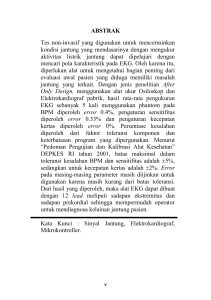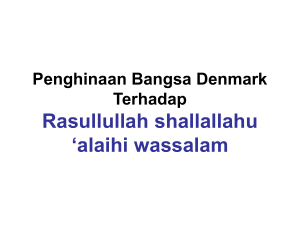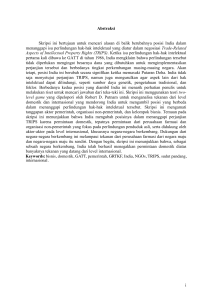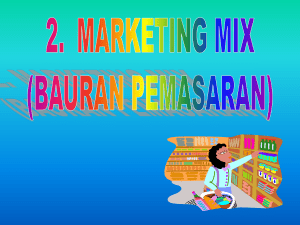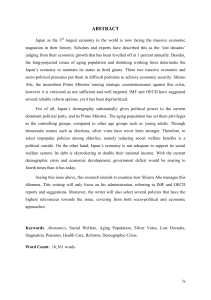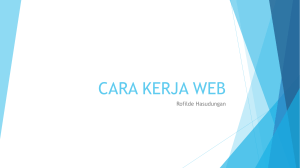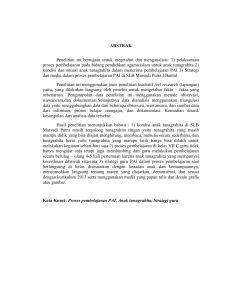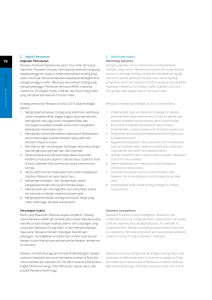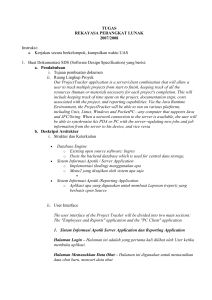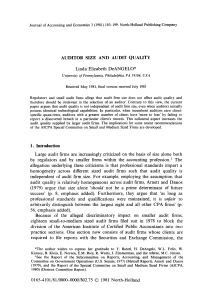Uploaded by
me.diansaapta
Chapter 13: Obtaining Evidence Through Interviews and Questionnaires
advertisement
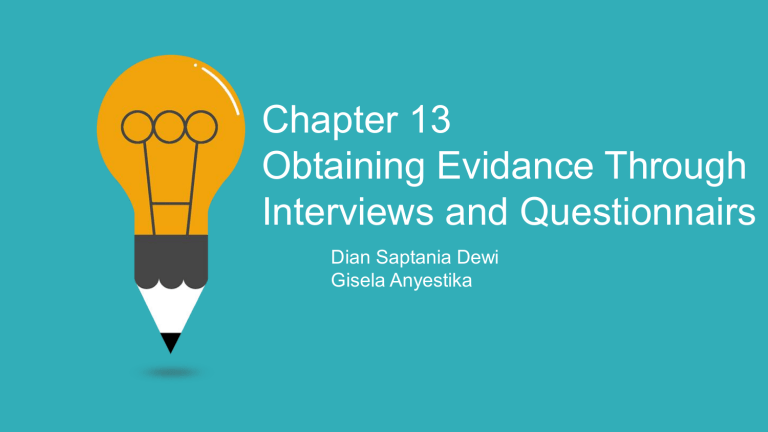
Chapter 13 Obtaining Evidance Through Interviews and Questionnairs Dian Saptania Dewi Gisela Anyestika The ability to interview is very important to the successful accomplishment of most of those audit. In large perfromance audits, to obtain sufficient reliable evidence at a reasonable cost, developing and using questionaires also become a very important consideration. Use Of Oral Information “ “ Auditors generally are required to obtain subst antial amounts of information that can be used as evidence during interviews and discussions with agency representative and others. Interview are sometimes the only means of obtaining basic information, and the information so obtained may also be used to supplement, explain, interpret or contradict information obtained by other means. Information is obtained from a source that is knowledgeable and responsible Its nature is properly identified The auditor would be subject to valid criticsm if he failed to take all reasonable measures to assure himself of the realibility of the information included in his report. 01 Sources of interview information • Interviews should be designed to explore fully those subjects with cognizant persons. • Findings that involve apparent deficiencies should be discussed with the officials directly responsible during the audit. 01 02 03 Level of Discussions Management aspects and the improvements in them should be discussed with the officials at an appropriately high level. Outside Experts Such interviews should be directed at insuring that the experts can be relied upon, and will as well add credibility to the findings. Informants 04 A person who has brought a matter to the auditor’s attention Planning and Preparing For Important Interviews 01 Advance Notice It will help to provide interviewees advance notice of the major topics the auditor interested in. Advance notice avoid wasted time. 02 03 04 Number of staff members present The auditor will usually find it advisable to have two staff members present. Discussing the topic • The discussion should be controlled by the interviewer to the extent necessary to keep it directed toward the facts or ther information pertient to the purpose of the interview. • Other suggestion for discussing topic successfully: 1. Get all the information needed during one interview. 2. Briefly summarize the salient information obtained. 3. Do not extent the interview beyond a reasonable period of time. Using recording equipment or stenographers • If the auditor consider it’s necessary to use recording equipment, an agreement should be reached with the interviewee. • If the interviewee make arrangements for use a personal stenographer or recording equipment, the interviewer should request a copy of the sibsequent transcript or tape. • If the auditor uses recording equipment, the resulting tapes should be come a part of the working papers and should be protected and controlled accordingly. Beginning An Interview Written record of interview Information obtained through an interview sho uld be reduced to writing as soon as possible. • Some form of written confirmation of signficant oral information should generally be requested from interviewees unless the information is otherwise supported and a request considered unnccessary. Form of confirmation Refusals to confirm oral information Questionnaires Advantages and Disadvantages 01 Convenience and economy in terms of cost and time 01 02 More easily tabulated 02 Inflexible Low realibility rate Design Planning for the use of questioners The potensial value and use of qustinnaires shoukd be considered in developing a work program • Consider the educational levels and experience. • Keep the length of the question naire within reasonable bounds. • Answers should be reasonably available to responde. • Group the questions logically. • Use multiple-choice. • Allow sufficient space for answers. • Question should be framed to a void defensive reactions by the responders. • It may be worthwhile to test the questionnaire on a limited basis Questionnaires: Advantages and Disadvantages Selection of responders is: • Use statistical-sampling • Controls over responses should be established • And systematic follow-up on late responders should provided for Distribution of qustionnaires is: • A carefully prepared letter • The tone of the letter should be cordial • Should be designed to encourage response • Should emphasize the importance of the information solicited • The letter should set a reasonable date Tabulating Answer 01 02 03 04 The design and proposed tabulations method should be compatible Avoid interpreting answers Controls should be established to insure accu arate tabulations CASE Indian Education: Analyzing Information from interviews Diketahui: • Pihak sekolah tidak mengetahui mengenai tujuan pendidikan oleh Kantor Pusat seperti yang dituliskan pada Memorandum Program. Tidak ada komunikasi mengenai tujuan yang dimiliki Kantor Pusat dan tujuan yang dimiliki Fort Wingate High School. • Hasil akademik siswa Fort Wingate High School berada dibawah rata-rata siswa normal lainnya karena adanya keterbatasan bahasa. • Ketentuan mengenai siswa yang dapat tinggal di asrama. • Penempatan kelas siswa sesuai dengan kebutuhan dari siswa. Seperti, kelas untuk anak-anak yang belajar lebih lambat dari yang lain. • Peningkatan minat baca dianggap penting, namun kenyataannya program membaca masih dikembangkan. • Auditor menyimpulkan bahwa pihak sekolah tidak pernah mendengar menganai tujuan edukasi yang dimiliki Kantor Pusat. Agen Pendidikan berorientasi pada sekolah dasar, sedangkan WSH adalah sekolah menengah atas sehingga ada perbedaan yang mendasar. • Jika ada keselarasan antara tujuan pendidikan yang dimiliki Kantor Pusat dan pihak sekolah, pasti organisasi akan berjalan dengan baik dan mencapai hasil yang diinginkan. Ditanya: 1. Apa tujuan dari wawancara? 2. Apa prosedur dan pedoman yang dimiliki auditor sebelum mereka datang untuk wawancara? 3. Bagaimana auditor mampu untuk menyimpan catatan dari diskusi tersebut? Salah satu dari catatan tersebut sangat panjang. 4. Apakah wawancara cukup ditulis sebagai bukti? Jelaskan. Dijawab: 1. Tujuan dari wawancara • Mempelajari mengenai pengetahuan dari pihak sekolah perihal tujuan pendidikan yang di terbitkan oleh Kantor Pusat seperti y ang ditulaskan dalam memorandum program. • Mendiskusikan mengenai kurikulum yang dimiliki sekolah dibandingkan dengan kebutuhan siswa. • Menginformasikan kepada pihak sekolah mengenai hasil dari wawancara serta memberikan rekomendasi. 2. Prosedur dan pedoman yang dimiliki auditor 1) 2) Menentukan sumber informasi wawancara Untuk mendapatkan secara penuh dan benar sebuah pemahaman tentang su bjek dibawah pertimbangan audit. Auditor biasanya akan memilih seseorang y ang dianggapnya memiliki pengetahuan dan posisi yang sesuai untuk diwawa ncara. Pada kasus ini auditor memilih Kepala Sekolah dan Wakil Kepala Sekol ah untuk diwawancarai sebagai pihak dari Fort Wingate Highschool. Merencanakan dan Menyiapkan untuk Wawancara Pewawancara harus mengetahui tujuan wawancara dan apa informasi yang in gin didapatkan. Untuk secara cerdas melakukan wawancara, seseorang harus familiar dengan fakta-fakta yang terungkap sebelumnya mengenai permasala han. Adapun hal-hal yang perlu disiapkan: a) Auditor atau pewawancara harus memberitahukan kapan dan dimana waw ancara dilakukan agar wawancara yang dilakukan akan bersifat ekonomis, efektif dan efisien. b) Auditor harus mempersiapkan jumlah staff yang diperlukan. Jumlah staf ya ng disarankan biasanya sebanyak dua orang agar tingkat kepastian lebih ti nggi dan pencatatan atas informasi bisa lebih akurat. 3. Cara auditor menyimpan hasil dari wawancara yang dilakukan? Selama proses wawancara, auditor dapat merekam seluruh diskusi dengan izin narasumber atau dengan memanfaatkan kinerja dari dua staf yang hadir melalukan pencatatan stenografi agar informasi yang didapat lebih akurat. 4. Apakah wawancara cukup sebagai bukti? Cukup tetapi hasil wawancara tidak bisa dijadikan dasar untuk menentukan kesimpulan auditor karena wawancara terkadang berguna untuk mendapatkan informasi dasar, dan informasi yang didapatkan dapat digunakan sebagai tambahan, menjelaskan, interpretasi, dan bertentangan dengan informasi yang diperoleh dengan cara lain. Thank you

